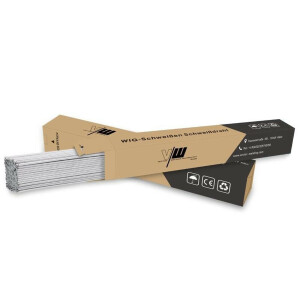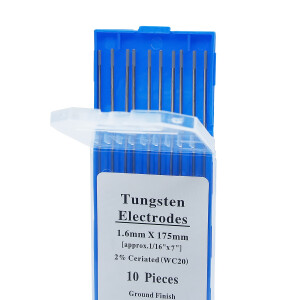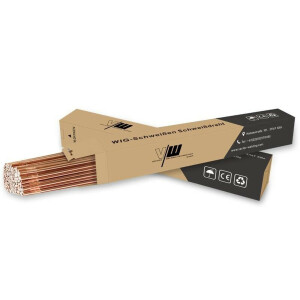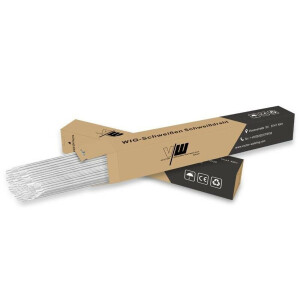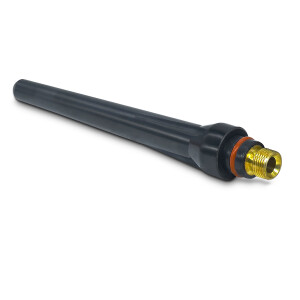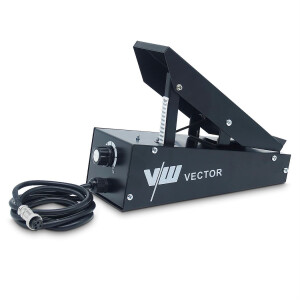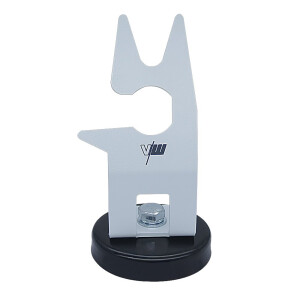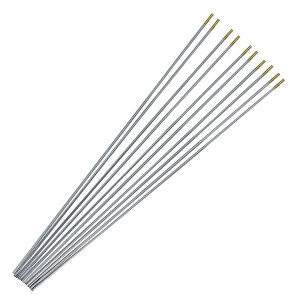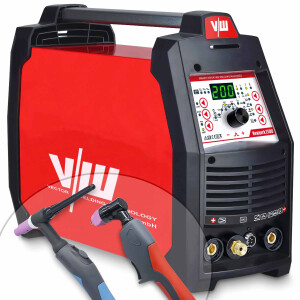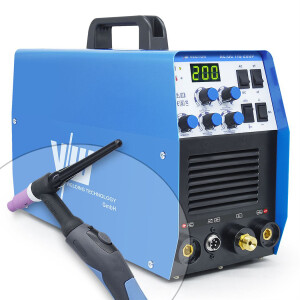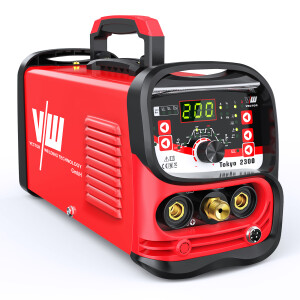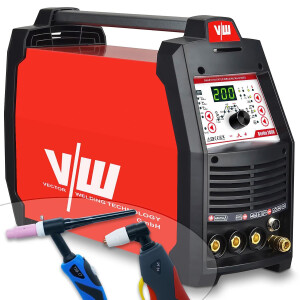Following we explain the setting options for TIG welding - setting sequence can be found in DISPLAY DETAILS (TIG). In our example we weld steel sheet with thickness 1,5mm. Please note that welding parameters are always to be adjusted individually to your project.
1. Set gas lead time (from 0.1 to 10 seconds), we choose 0.4 Sec. Rule of thumb: 0.1 seconds per meter of hose package is a good basic setting.
2. Starting current: Adjustable between 10 and 200 amps, depending on the main current selected, we choose 30 amps for our example, since we will be welding at 60 amps. This allows us to achieve a "softer" ignition, which is particularly advantageous for thin sheets. CAUTION: These settings are only active in 4T mode.
3. Current increase: Here we set the speed at which the device changes from the starting current to the main current. The adjustable range depends on the main current. In our case, we choose 0.6 seconds.
4. Primary (main) current: Relatively welding current, which is adjustable between 10 and 200 amps. In our case, we choose 60 A.
5. Secondary (base) Current: When we pulse, we can set a second current (lower) here, and our welding current will alternate between the main current and the base current permanently. The proportion can be determined.
6. Pulse width: is given as a percentage and defines the proportion of the main current, versus the base current.
7. Pulse frequency (Hz): normally the pulse frequency is in the range up to 10Hz.
8. Current reduction: Here we define the time interval in which we lower the main current to the final current. We set here again 0.6 seconds, so we prevent the formation of the final crater.
9. Final current: we choose 30A, the same value as our starting current.
10. Gas follow-up time: especially important for stainless steel, as we achieve protected cooling of the weld pool on the workpiece. Our tungsten needle is also optimally cooled.
11. AC Balance: Relevant when welding aluminum with alternating current (AC). Here we control the time ratio between the positive and negative half-wave. The display is shown as a percentage. Decreasing the balance leads to a higher penetration depth, increasing it improves the cleaning effect.
12. AC Frequency: This sets the frequency of the AC current. Displayed is the frequency in Herz, adjustable between 10 and 200. This mainly allows us to influence the flow behavior of our weld pool. A higher frequency promotes a stable arc, but reduces the power resulting in a tough pool. At a lower frequency, the arc becomes more unstable but has high power, resulting in a thin-flowing bath, which allows us to weld thin sheets and fillet welds faster.
